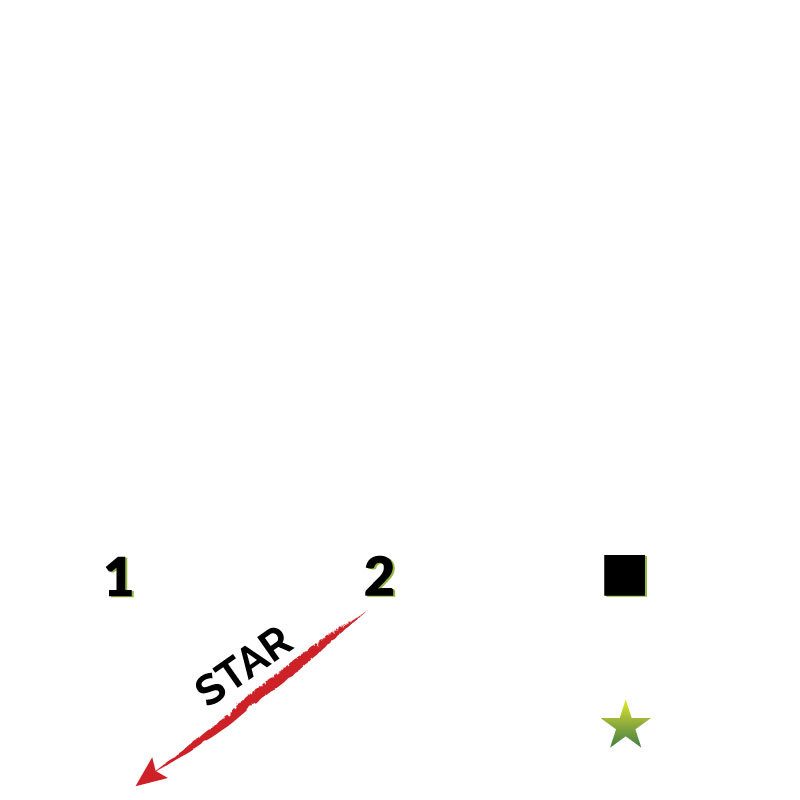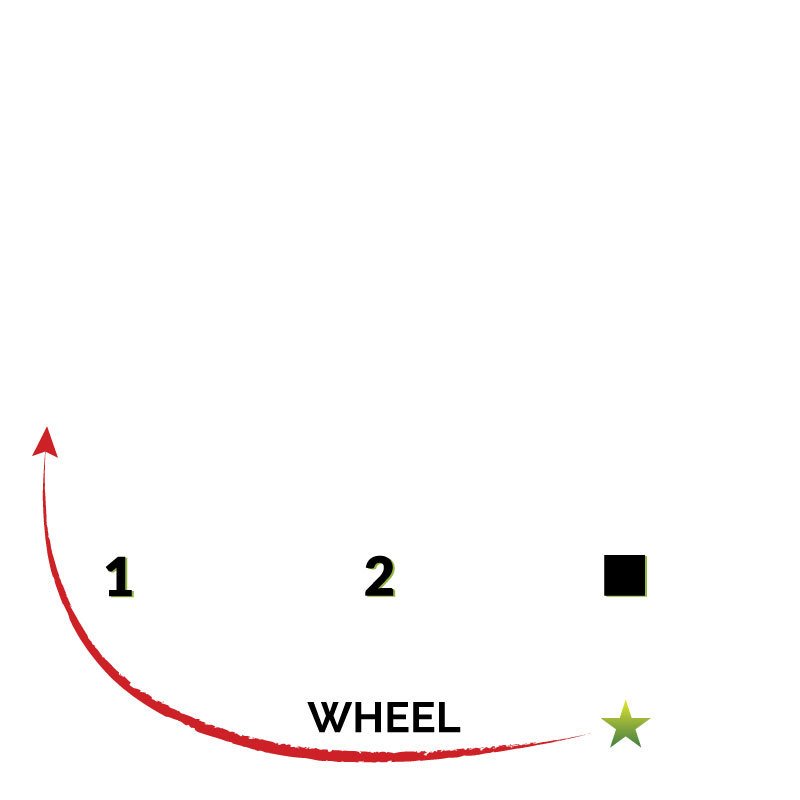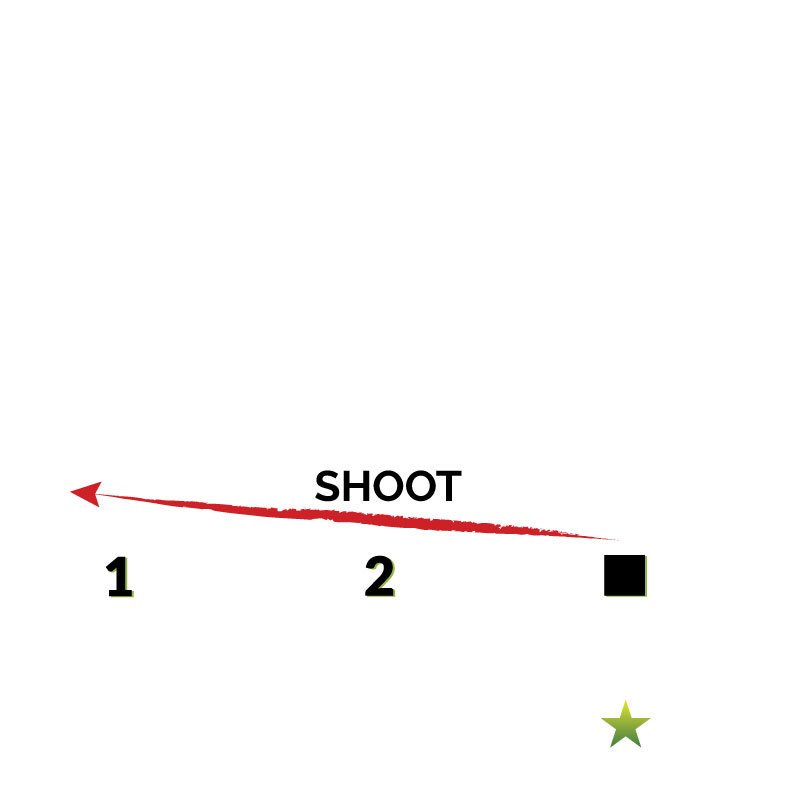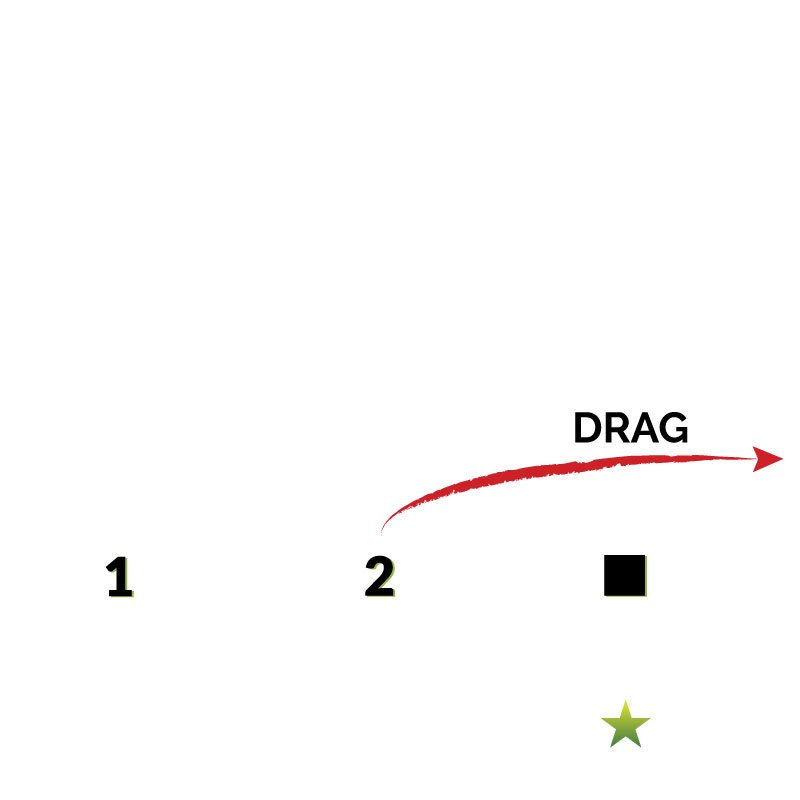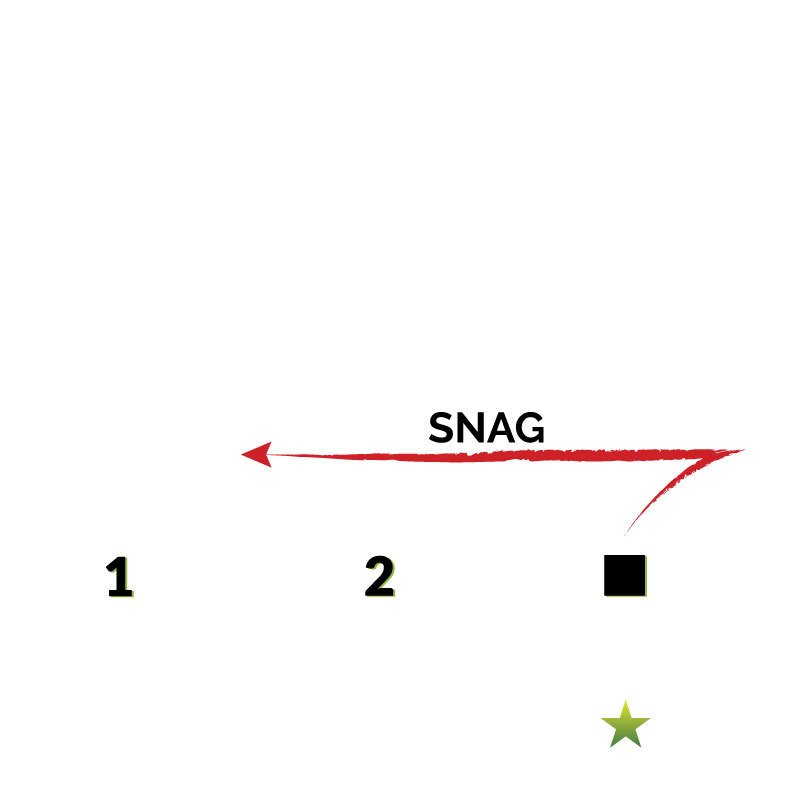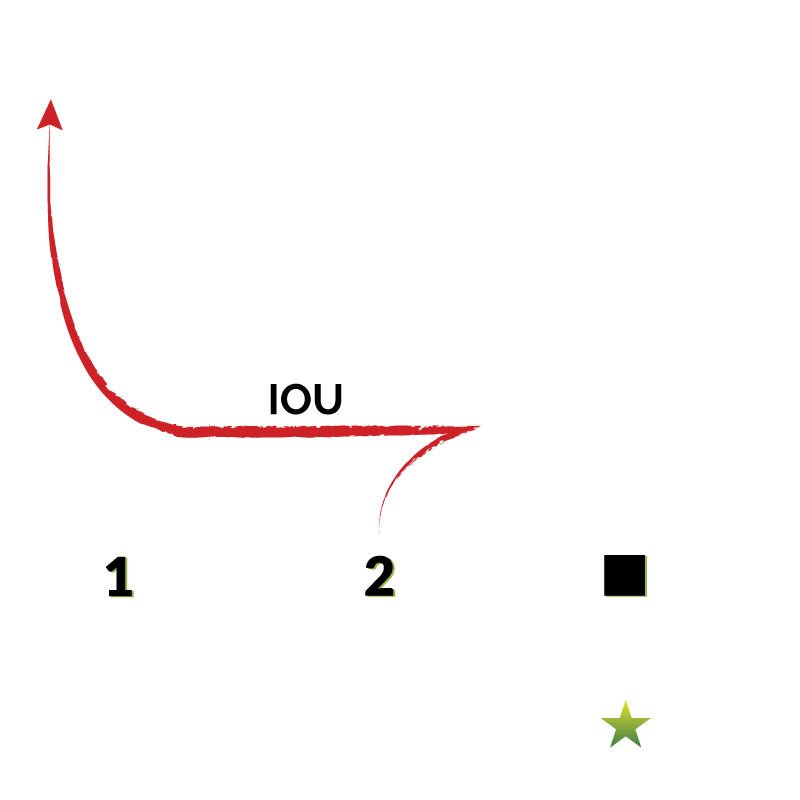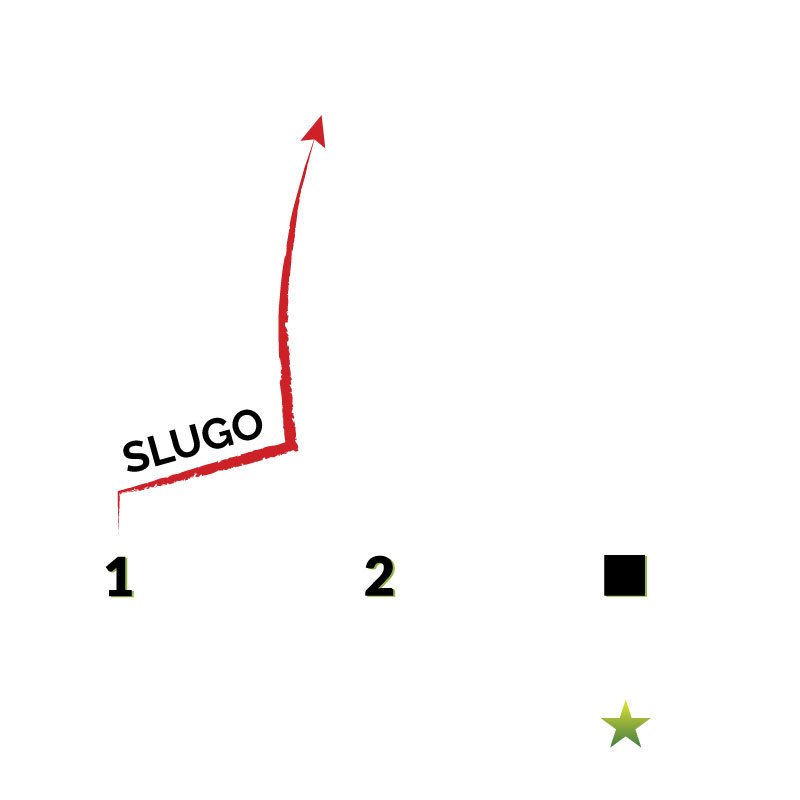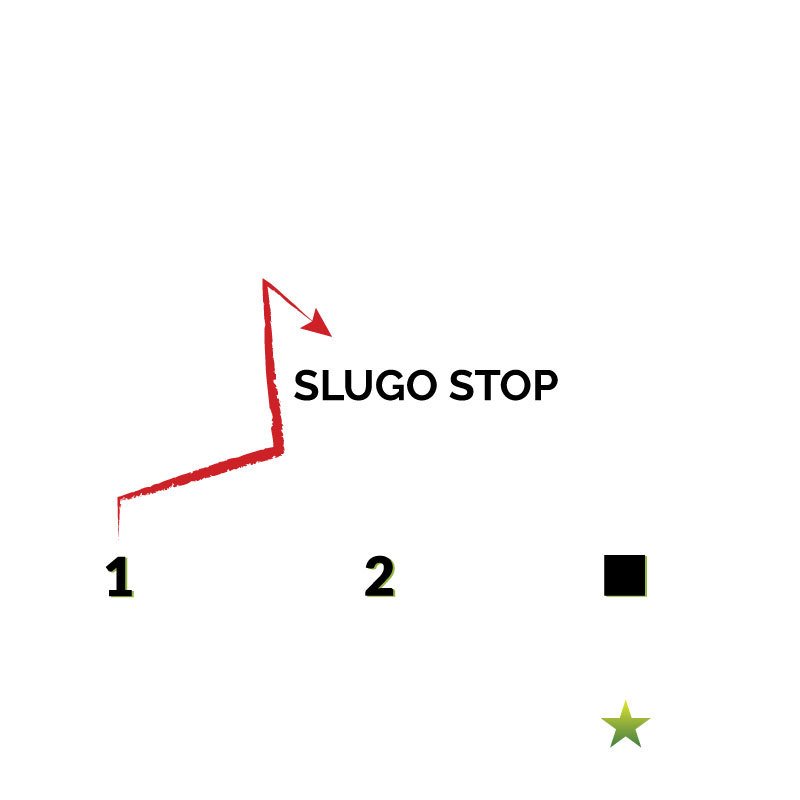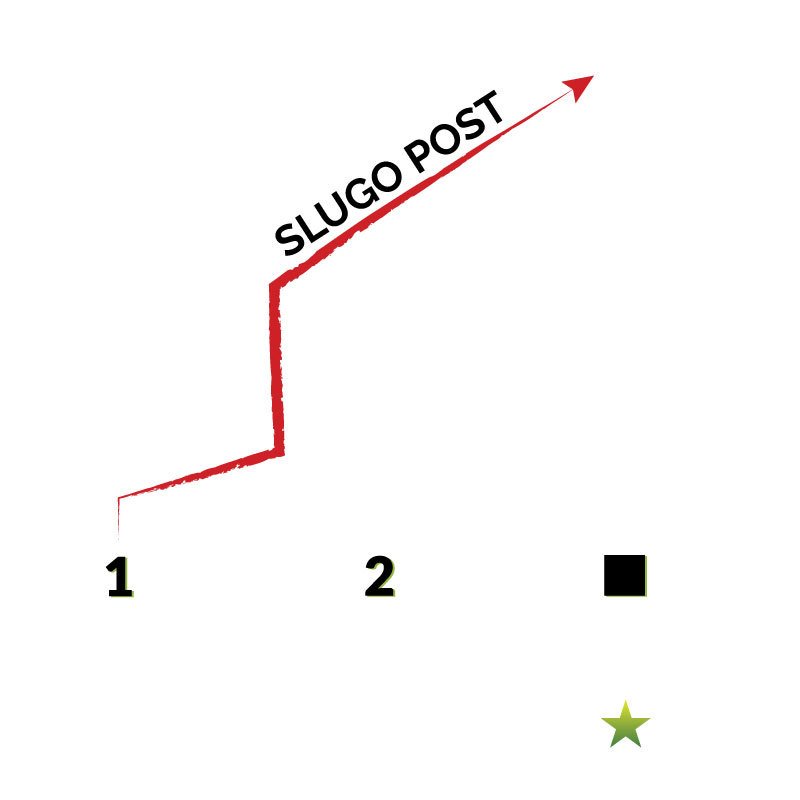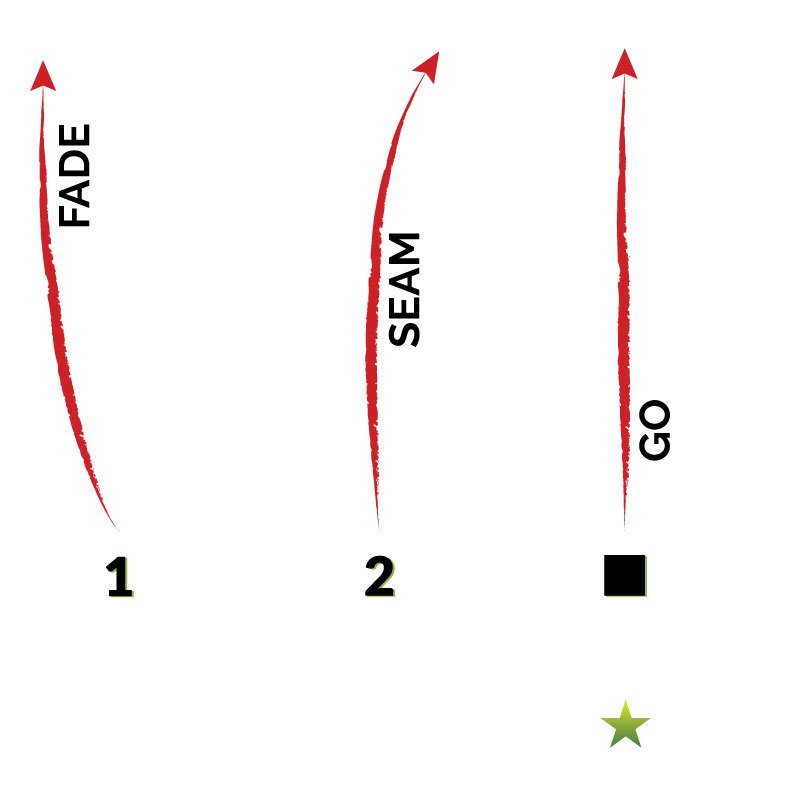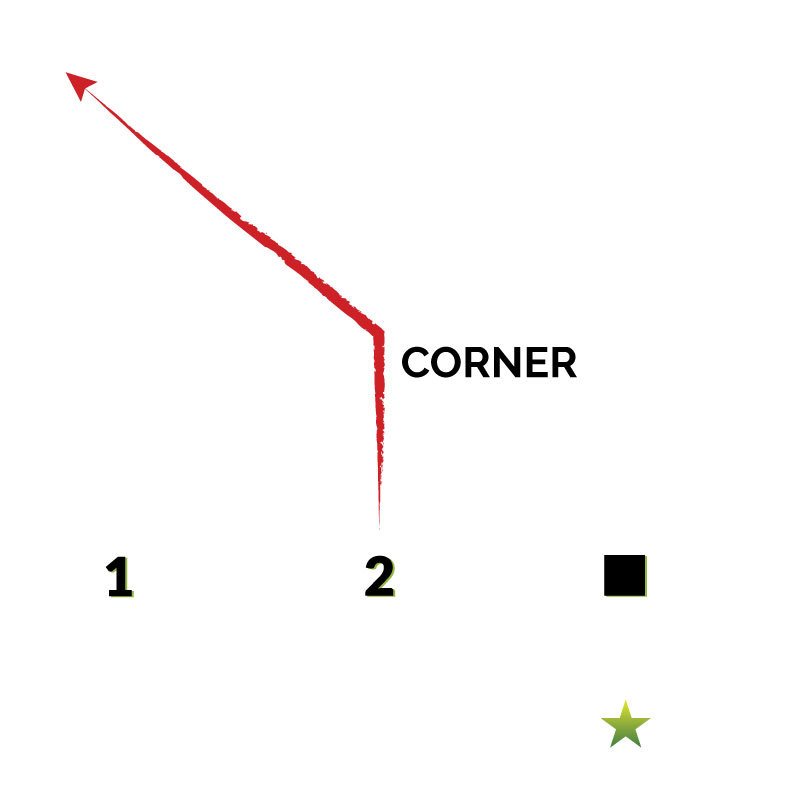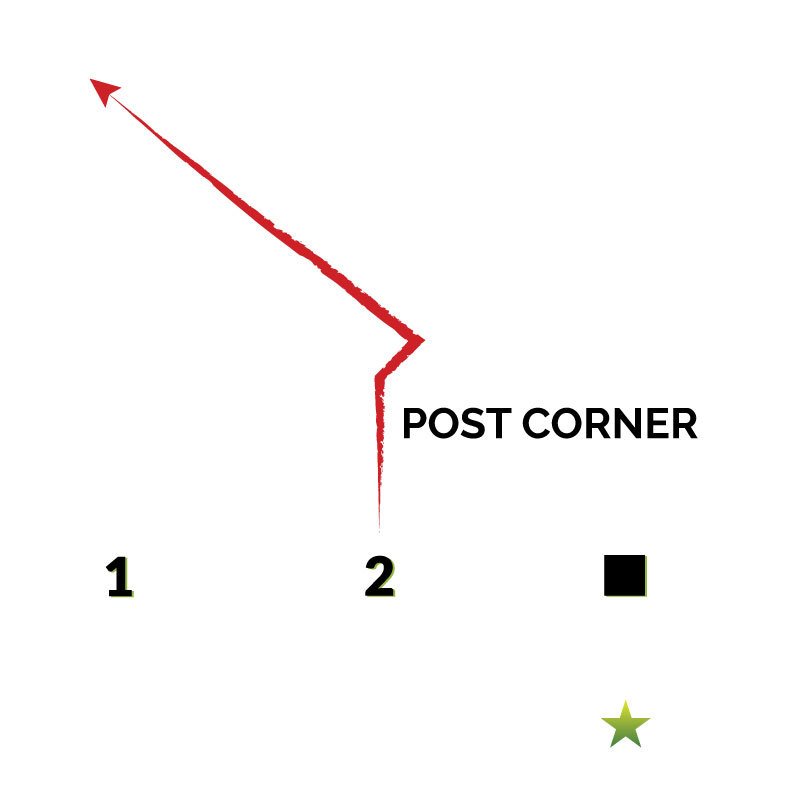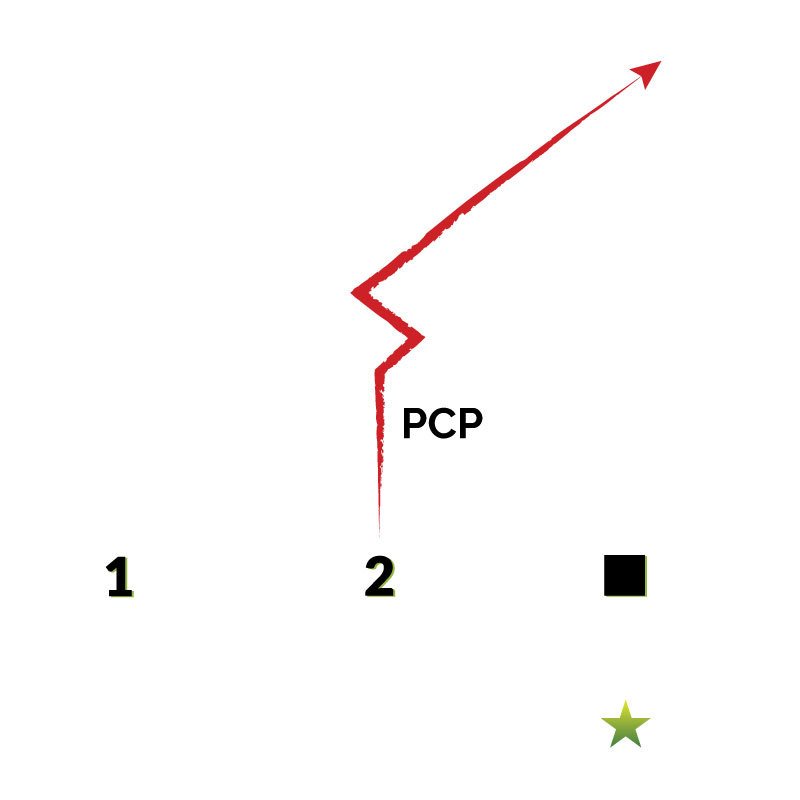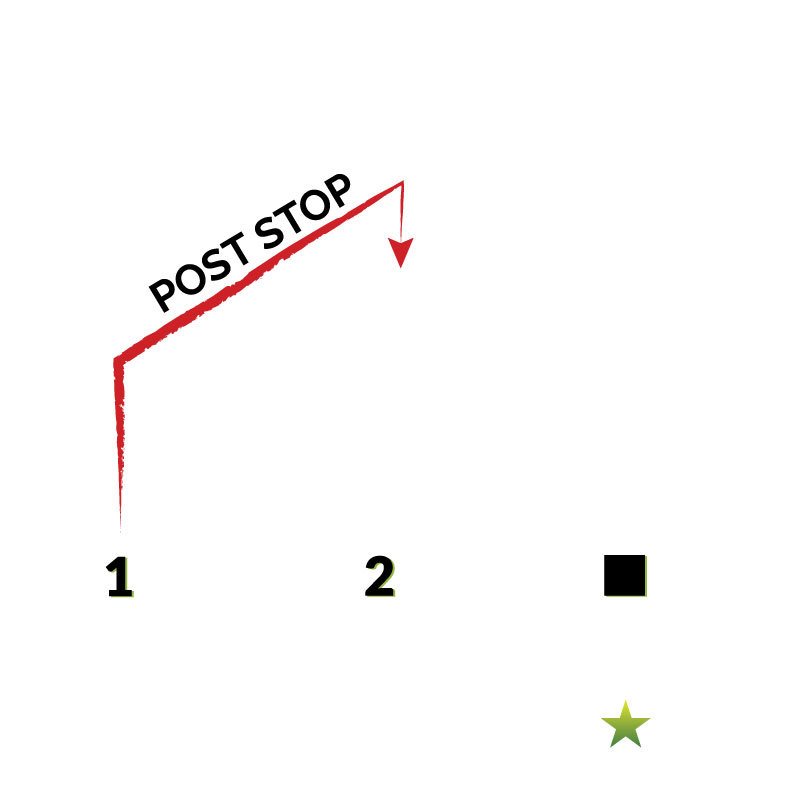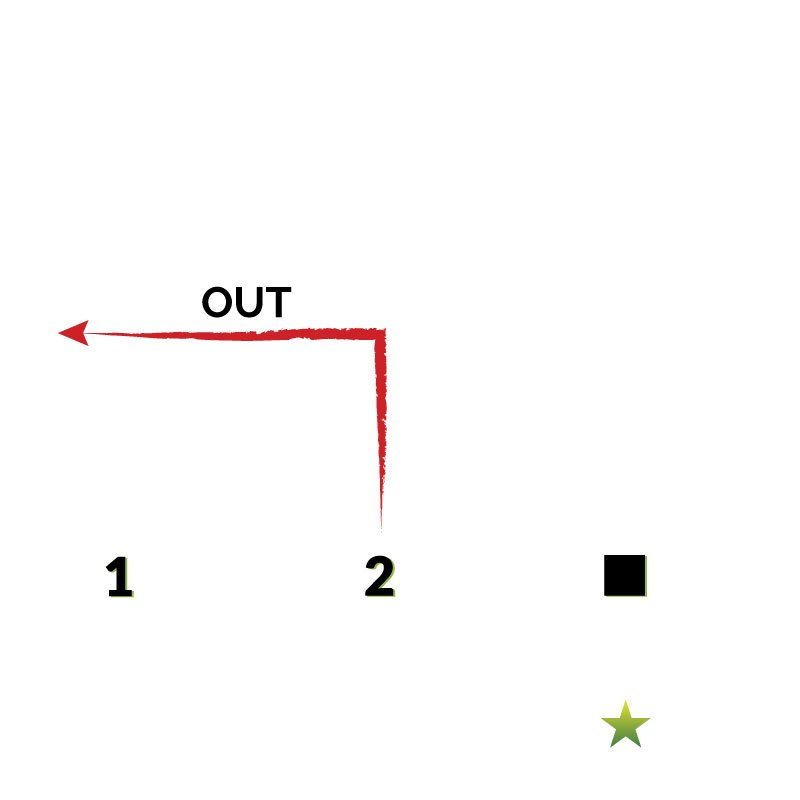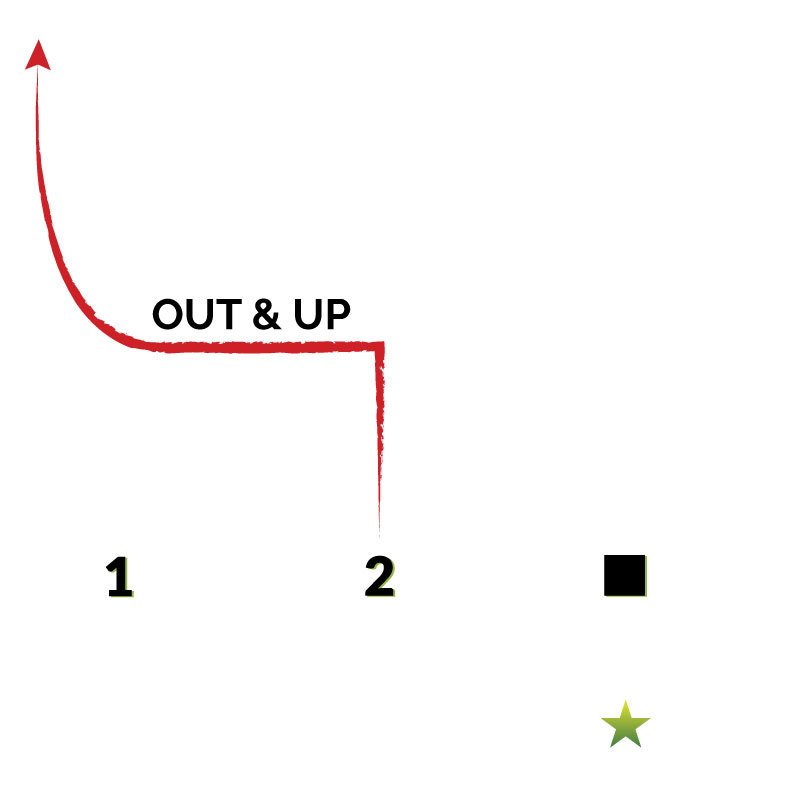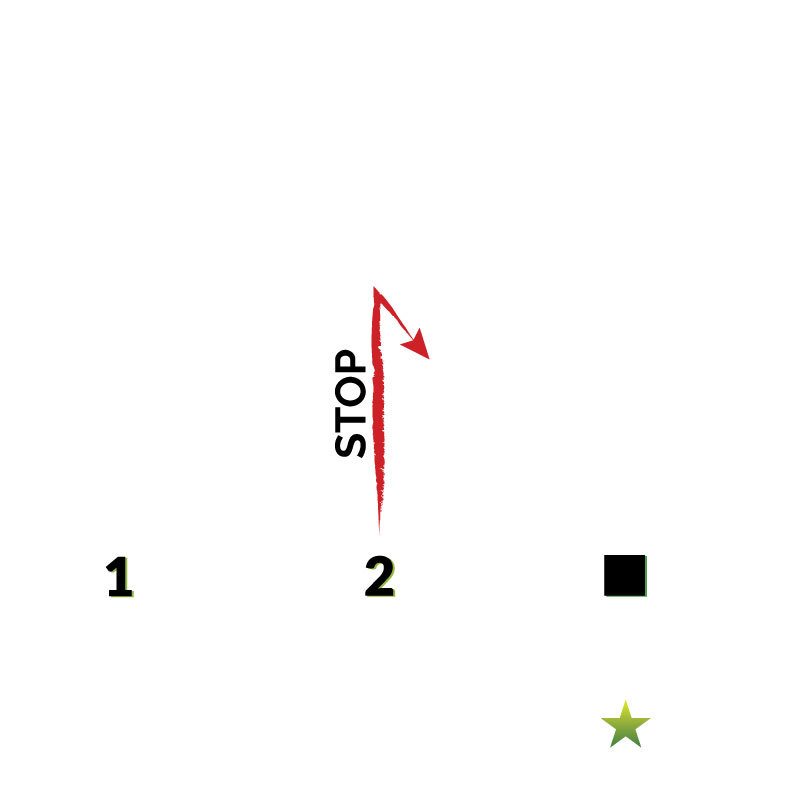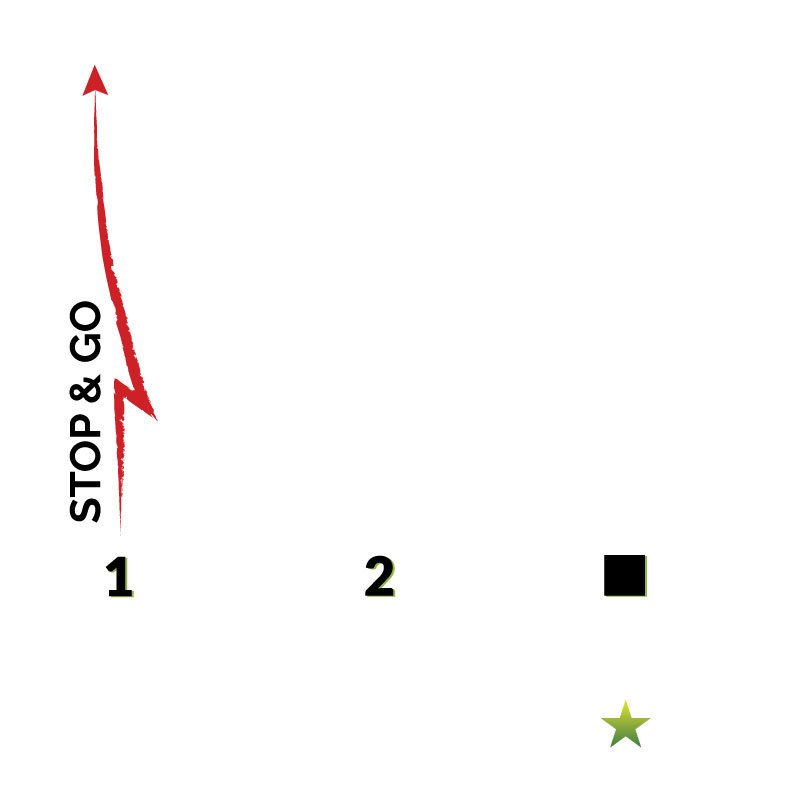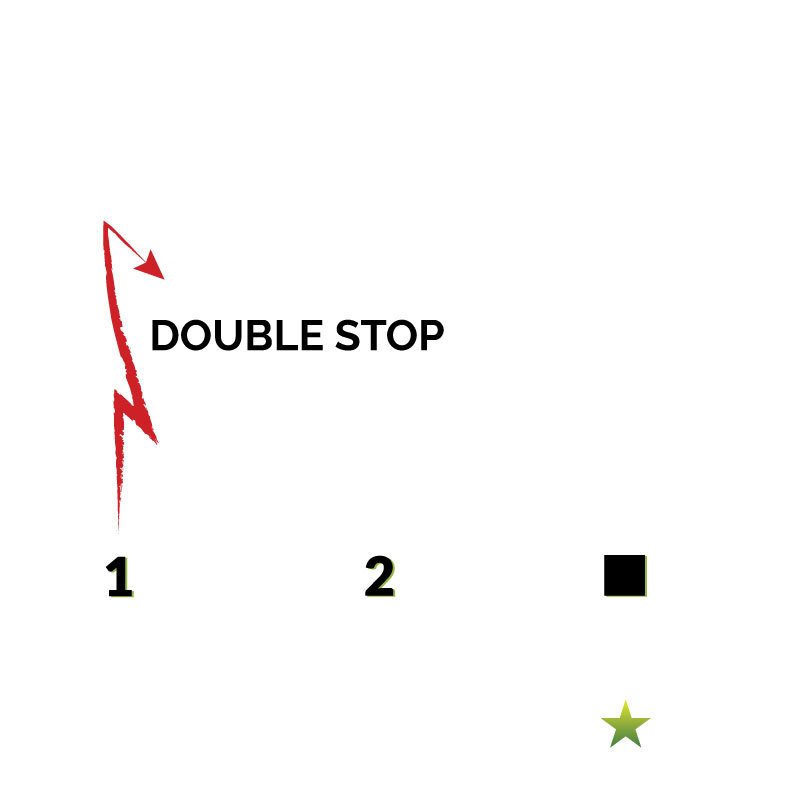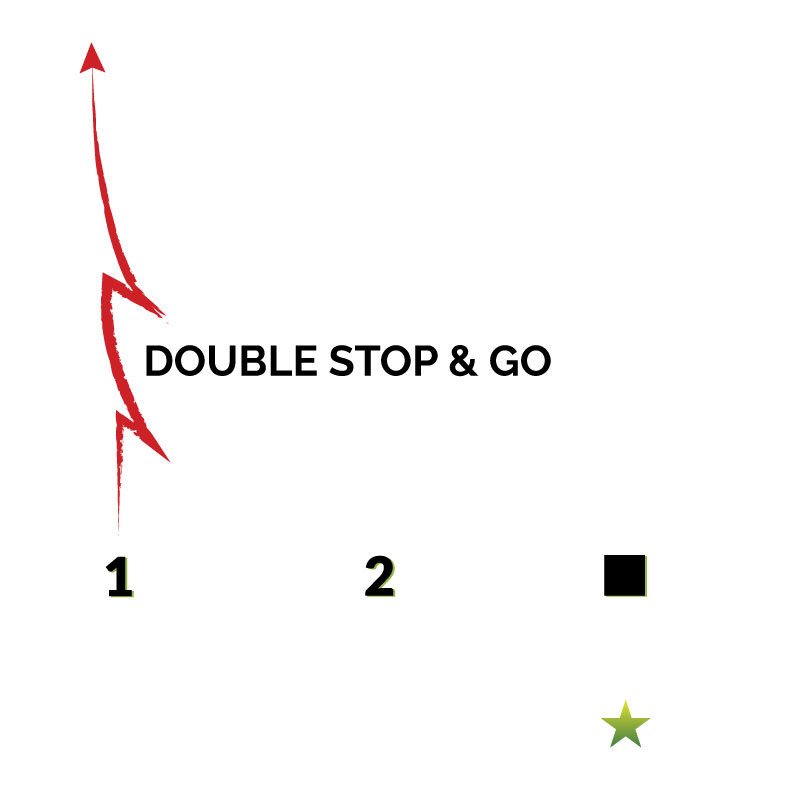
Guide to the Ultimate Flag Football Routes Tree
Running flag football routes isn’t too different from running traditional football routes, but there are some nuances & differences, along with common terms and names for them that many new players aren’t familiar with. Here is a list of 22 flag football routes, a football route tree that you can reference and some information to help you become a flag football routes master!
QUICK FLAG FOOTBALL ROUTE TREE LINKS
Drop / Star | Wheel | Shoot | Dig / Drag | Snag | Go / Fade | IOU | Slant | Slugo | Slugo Stop | Slugo Post | Corner | Post | Post Corner | Post Corner Post | Post Stop | Out | Out & Up | Stop / Comeback | Stop & Go | Double Stop | Double Stop & Go
Drop / Star
It might be a stretch to include this with traditional football routes, but in flag football so many teams use it, that it’s worth mentioning in case you’re not familiar. If you’re ever asked to “star” or “drop”, or be a “throwback”, this is what they mean. Essentially, your goal is at the snap of the ball, to immediately move back behind the primary quarterback, allowing him to throw backwards to you if desired in a lateral type move, that then affords you the ability to run or throw again. Not all leagues or tournaments allow this, but many do.
Wheel Route
A fairly common flag football route, usually reserved for players coming out of the backfield, such as the quarterback, running back or via a fake hand-off. It’s important to always be ready for a pass while running this route as if you come open it’s usually quick, but you can also wheel up the sideline and turn the 2nd half of the route into a go, or improvise from there. Wheel routes are typically extended all the way to the sideline.
Shoot Route
Shoot flag football routes are also known as “quick outs” by many, where you immediately “shoot” towards one sideline or the other, staying close to the line of scrimmage. Similar to the “out” route, except you don’t advance up the field at all initially, and you immediately look for a quick pitch or throw as the route is much quicker to develop.
Dig / Drag Route
Drag flag football routes, also known as an “in”, “dig” or “crossing” route, can be similar to a shoot route, except they are typically a bit deeper, between 3-10 yards, although the distance can be modified to the quarterbacks desire. They’re also considered a “crossing route”, ran towards the opposite sideline crossing the center, versus a “shoot route” or “out” which is always towards the nearest sideline. These routes can be rounded off or squared off depending on your preference and how quickly you’re looking to get in and out of the route.
Snag Route
A snag route is essentially a way to disguise whether you’re running a “shoot” or a “drag”, by faking one with 2-3 steps in that direction, then reversing field. Useful if you’re looking to hold a defender and give him pause while executing other routes around him, or allowing other routes to clear while you drag under. Effective against zone and man defenses.
IOU Route
One of my personal favorite flag football routes, the receiver essentially runs a “snag” route, either from the center or slot position, then wheels up the sideline for a deep bomb. The quarterback typically will need to buy some time as this is a longer developing route, and it’s best to pump fake the snag just before the wheel to suck in the defender.
Slugo Route
A variation of the slant, also known as a “slant & go”, a Slugo sells the slant route, with a quarterback pump faking the slant, then the receiver cuts upfield into a seam (middle thirds of the field) or fade (towards the sideline) depending on the coverage. Some quarterbacks even distinguish the route they want you to run by calling it a “Slant Fade” or “Slant Go”, so make sure and check with them what their preference is. Very effective against a aggressive man defense.
Slugo Stop Route
Piggybacking of the Slugo, the Slugo Stop route is a great variation in the event you are predicting man coverage with a defender who’s playing far off the ball, typically because he’s afraid of your receiver’s speed or in a long distance situation. The Slugo Stop is typically good for 10-15 yards without much problem in these cases.
Slugo Post Route
Further piggybacking on the Slant, Slugo & Slugo Stop, the Slugo Post flag football route is a more advanced route that is a good route if you are anticipating the defense sitting on a Slugo or Slugo Stop. Typically used after the other routes have set this up properly to give the defender a false sense of security, just like a post, this is a hard route to cover if run properly and with a good throw towards the sideline.
Go / Seam / Fade Route
Probably THE most common football route of all time, it’s just as effective in flag football as well. Also known as a “Fly” route, a “Go” route is essentially just run straight as fast as you can and catch the football, pretty simple. A “Seam” route usually bends in towards the middle thirds of the field, typically run out of the slot position, while the “Fade” route is typically run from the outside, allowing the quarterback to fade the receiver towards the sideline where the defender doesn’t have much of a shot to defend a perfect throw. A good quarterback will expect you to know the difference between each, as it greatly affects the placement of the ball if the receiver bends it the wrong direction.
Corner Route
A “Corner” flag football route, is typically a 5 – 10 yard vertical with a 45 degree break towards the nearest sideline. In man coverage, it’s very hard to defend a perfect throw unless the defender is significantly faster than you with great instincts, and allows the quarterback to put the ball towards the sideline limiting the chances of an interception, but also making it a very tough throw.
Post Route
Similar to a corner route, the “post” route is run towards the middle of the field, usually on a 5-10 yard break, at a 45 degree angle or so. If run correctly, and against man coverage, it’s a low risk high reward type of play that is typically run with your faster athletes or against your best matchups.
Post Corner Route
Essentially just a corner route, but takes slightly longer to develop thanks to a step or two towards the post, before breaking back to the corner. The idea is to set up the defender inside and get him to bite on the double move before breaking to the corner. If sold properly, it’s hard to stop.
PCP Route
One of my favorite flag football routes, also known as the “Post Corner Post”, this route is almost impossible to stop in man coverage with a speedy receiver that can run good routes, and a quarterback that can buy a little time. It takes a second or two longer to develop than the Post Corner, so usually best with a blocker or while rolling, but if you can pump fake the corner route and get the defender to bite, it’s as close to a sure touchdown as you can get.
Post Stop Route
Many times when the defense is in a soft zone, it’s not ideal to continue running a post or crossing route directly into the defense. In those cases, running a “Post Stop” type route will allow your receiver to settle in the soft zone of the defense. Great against a 2-2 style defense where the middle is typically the weak spot, this route is a great 10-15 yard easy read and completion against most zones.
Out Route
Another of the common flag football routes, “Out” routes are as simple as they come. Always clarify how deep the quarterback wants the route run, as you can run it at almost any distance, whether it be 3, 5, 8 10, 15 or 20 yards even depending on the quarterback. Always run towards the sideline, essentially the opposite of a dig route.
Out & Up Route
Fake the “Out” route, and wheel up the sideline. Again it can be run at any depth, and works great with a quarterback who can effectively pump fake and buy time as it may take a couple extra seconds to process. Another common variation of this play, is if you know the defender won’t bite and just sits over the top waiting for the out & up, thrown in a stop route at the end at around 12-15 yards to mix it up and keep them honest.
Stop / Comeback Route
The “Stop” route, also known as the “Curl” or “Comeback” is one of the most basic flag football routes, but needs some clarification. It’s important to know exactly how deep it’s expected to be run (5, 8, 12 yards, etc), and if it’s breaking towards the quarterback or towards the sideline. Many people use similar terms with this route to mean different things, so always best to ask. If run from the center position, you typically will curl or comeback opposite of the rusher to give the quarterback a proper lane to throw.
Double Stop Route
If you think a defender is playing far off the ball to give up the short passes and make sure nothing gets behind him, the double stop works great. I love to use this on 3rd and long, trying to give the illusion that we’re going deep then breaking back towards the ball at the first down marker. Hard to defend a speedy receiver running this route with a DB that isn’t as fast.
Double Stop & Go Route
This is a great play to run against a defense that thinks they have you figured out. Where we play, the double stop is fairly common, so a double stop and go can catch a defender jumping the stop, and with a quarterback who can buy a little time, this play works great. It does take longer to develop, but it’s worth it.


